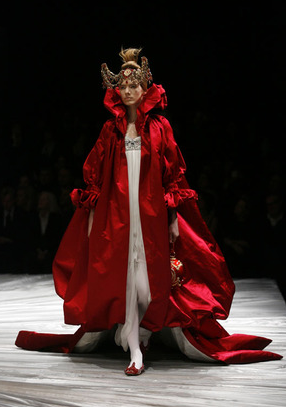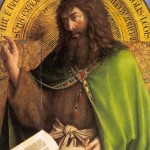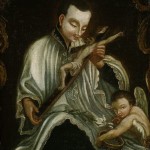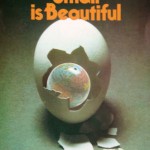From high fashion to a meditation on mortality and transcendence: the Alexander McQueen retrospective
It is easy to mock the world of high-end fashion for its preening, Zoolander excesses. With every passing Spring/Summer, Autumn/Winter collection, the business of fashion can be dismissed as a superficial enterprise, an ephemeral exercise that is only attached to serious art forms by the finest of threads. The Alexander McQueen retrospective, Savage Beauty, challenges such cultural prejudices and stereotypes. McQueen’s work is, in fact, deeply serious and makes a strong case for fashion being art. Seeing McQueen’s work together in this way confirms him as a “Cockney visionary”.
This retrospective is much more than an exhibition of exquisitely crafted garments worn by inanimate mannequins. McQueen’s interest was, above all, conceptual. His clothes are an invitation to engage with the mysteries and pities of human existence: nature, mortality, beauty, sexuality and metamorphosis. In McQueen’s hands, clothes focus the human body as the site where these mysteries surface and are able to be seen with renewed clarity. McQueen, the master tailor, uses every fabric choice, chalk mark, cut, stitch and pleat to explore a paradox or intuition which, if articulated in any other medium, would appear mundane.
McQueen’s unbridled imagination, like some creative tsunami, takes hold of the viewers and compels them to succumb to its astonishing power and range. His vision is a dark and elemental force that leaves one gasping at the beauty and subversive daring of his work. But what is truly shocking about McQueen is his traditionalism. The boy may have been taken out of Saville Row, but the Row is evident in McQueen’s technical prowess and his instinctual awareness of how the smallest detail – the turn of a cuff, the length of a jacket shoulder, the style of a button – can affect the overall look and meaning of a garment.
McQueen is sometimes caricatured as the East End chav who vandalised the rule book of haute couture with his transgressive, street attitude. This exhibition, however, proves the contrary. McQueen valued tradition and honoured it, both in his technical execution and historical concerns, as exemplified in his reimagining of the English frock coat and Japanese kimono.
It is impossible to imagine that any of the garments in this show could have been created outside the tradition of tailoring in which McQueen had been trained. His work should thus be seen as a development of tradition, rather than a rejection of it. Contrary to popular belief, McQueen was not a rag trade iconoclast.
So many of the clothes and accessories in this exhibition bring to mind the Ash Wednesday formula: Remember, man, that thou art dust and unto dust thou shalt return. McQueen’s main preoccupation in life was “the skull beneath the skin”. His clothes are thus memento mori. But a visit to the Victoria and Albert museum for evidence of this fact is not necessary. One has only to observe on any high street the proliferation of scarves and t-shirts decorated with skull prints, inspired by Alexander McQueen.
The Christian conviction is that, although we will return to dust, we are, in fact, made for the paschal fire of the Resurrection, where our hope is to be found. It seems that McQueen did not share that hope. His first catwalk show was entitled, Nihilism (Spring/Summer 1994); and both in his work and in his personal life, he appears to have resigned himself to living with the belief that we are nothing more than dust. He wanted to show us fear in a handful of dust.
Yet so much of his work contradicts that nihilism. McQueen appropriates fifteenth-century religious iconography, especially from the paintings of Hans Memling and Hieronymous Bosch. The best of McQueen’s work has an almost limitless and sublime quality that strains to break free from the gravity of earthly concerns, seeking to transcend spatial constraints. One might point to many of his designs that use feathers, valued for their textural lightness and metaphorical significance.
Towards the end of this exhibition, Kate Moss appears in a film installation using a nineteenth century optical illusion called Pepper’s Ghost. She appears to be floating in an otherworldly, breathtakingly beautiful reality. Thus, McQueen’s aesthetic seems to suggest, albeit obliquely, that we will be transformed into new creations, extending beyond our bodily limitations and the fact of death, and that there is a grandeur and strange beauty awaiting each one of us.
For those, like myself, who are mesmerised by intricate stitching work or the way a silhouette can be sculpted from an inert roll of fabric, Savage Beauty is a must see. And for those who claim to have zero interest in fashion and believe it to be a trivial pursuit, this vital and complex retrospective may well prove to be a moment of conversion.
Alexander McQueen: Savage Beauty, Victoria and Albert Museum, London
Tags: Alexander McQueen, Savage Beauty


















We can always pray †